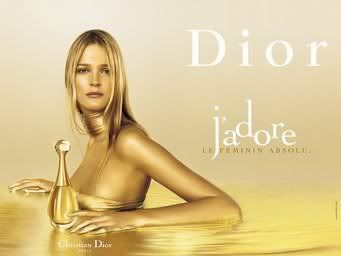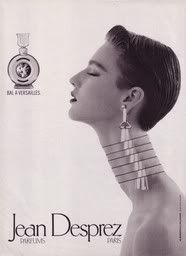
Let’s see what is actually used.
The naturals:
Birch: Betula Alba, the tree known as birch, owes its name to the Latin verb batuere meaning to strike. It is no coincidence that the branches of birch have been used for corporal punishment. Traditionally used in tanneries in Russia, Finland and Northern Europe in general, its bark produces birch tar and resin, an intensely wintergreen and tar-like odour, which has been used in Cuir de Russie type of scents in the distant past. The oil is widely used in suede and leather tannery in Russia and the essence obtained from birch buds is used for hair tonics and some cosmetic products.
Juniper and cade oil:
Juniper trees produce dark viscuous oil (cade) upon getting burned which possesses a smoky aroma that reminds one of campfires in the forests. Also used in Cuir de Russie type of scents in the past along with birch. It additionally has an anti-mould property which explains why it is a prime material for the binding of books, surely prone to decay and deterioration otherwise.
Styrax: Liquidambar Styraciflua and Liquidambar Orientalis trees are used for their excretion of the sapwood obtained by pounding the bark of both varieties. L. Styraciflua comes from the Americas (in particular Honduras, Guatemala and Mexico), while L.Orientalis comes from Asia Minor. The essence used in perfumery to give a leather undertone comes from the Honduras and is purified with volatile solvents or through vacuum distillation.
Styrax notes are usually sweeter than those of birch when used for leathery notes.
Cassie: The bark of cassie, a tree that belongs to the family of mimosa, and the absolute from the flowers are also used for giving a deep, intense leather note in some perfumes based on natural essences.
Castoreum: The secretion from the glands of beavers from Russia and Canada is a very intense, repulsive odour that when highly diluted can provide a leathery scent to fine perfumery. A by-product of the fur industry, it has been prized in perfumery for its tremendous fixative powers and its deeply animalic edge with a dry quality that smells like real leather.
Another natural essence that can produce a leather note although not usually used as such is Myrtle. Because of its camphoreous, green, rather than pungent leathery aroma, it is not the preferred choice for rendering a leather note in perfumes; although it is used in tanneries for the curing of hides.
Last but not least, cistus labdanum can provide a leathery backdrop- in cases where a more smokey/ ambery note is required ~such as in Caron Tabac Blond, Serge Lutens Cuir Mauresque and Ava Luxe Madame X {click for review}.
It is important to note that natural perfumers can render leather notes in their perfumes through the combined use of different essences such as black tea, patchouli or tobacco in addition to the above; sometimes opting for ethically avoiding animal products (castoreum) altogether.
The synthetics:
The major revolution in the production of leathery notes in perfumery came in the 1880s with the apparition of quinolines, a family of aromachemicals with a pungent leather and smoke odour that was used in the production of the modern Cuir de Russie scents appearing at the beginning of the 20th century such as Chanel’s (1924) as well as in Caron’s Tabac Blond (1919), Lanvin’s Scandal (1933) and, most importantly, Piguet’s Bandit (1944).
The chemical name of the ingredient primarily used from the quinolines groups is 4-(2-methylpropyl) quinoline, commonly referred to as isobutyl quinoline. A colourless to pale yellow liquid, used in a dilution of 1.00 % solution or less, it possesses a fiercely potent odour profile described as earthy, rooty, and nutty, echoing certain facets of oakmoss and vetiver and blending very well with both. Isobutyl quinoline also has ambery, woody, tobacco-like undertones: a really rich aromachemical! Its character can be very well perceived in the above scents as well as Cabochard by Gres.
Another synthesized note is the suede accord: a much subtler, more velours deep feel in the realm of leather notes. Less aggressive, suede notes are created in the laboratory for modern fine perfumes such as Lutens’ Daim Blond and Donna Karan. The origins hinge on muscone in the past or a complex tactile evocation of suede through a secret formula for more recent examples.
To a lesser degree the safraleine aromachemical can add a leathery tinge to perfumes. Evident in isolate of saffron, safraleine has an interesting smell ~ a combination of shoe polish/black cherry/air conditioning refrigerating fluid.
Aldehydes and especially C10, C11 and C12 are also used in addition to other ingredients in leathery perfumes to round out the composition and make it smooth.
Last but not least, in an effort to find materials that would enhance or augment leather tones and provide a cheaper and more stable alternative to animal-derived castoreum for rendering leather notes, the US Patent 4528124 (Jul, 1985 Sturm et al.252/522) has been proposed as a solution. The compound having the structure ##STR2## is a known compound disclosed at Chemical Abstracts Volume 99, Monograph 139339e. As I haven't smelled this secret ingredient I cannot report back on its effect, but it worth mentioning.
The search for materials which can provide a more refined leathery and castoreum aroma profile apparently continues.
Next instalment will focus on a scent fit for kings.

.jpg)











